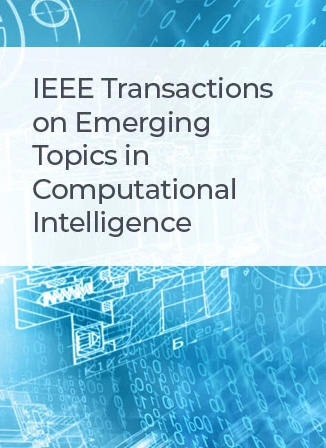Dual-Population Evolution Based Dynamic Constrained Multiobjective Optimization With Discontinuous and Irregular Feasible Regions
IF 5.3
3区 计算机科学
Q1 COMPUTER SCIENCE, ARTIFICIAL INTELLIGENCE
IEEE Transactions on Emerging Topics in Computational Intelligence
Pub Date : 2025-02-18
DOI:10.1109/TETCI.2025.3529882
引用次数: 0
Abstract
Dynamic constrained multiobjective optimization problems include irregular and discontinuous feasible regions, segmented true Pareto front, and dynamic environments. To address these problems, we design a dynamic constrained multiobjective optimization algorithm based on dual-population evolution. This algorithm includes two populations, P1 and P2, based on the feasibility of solutions. It utilizes valuable information from infeasible solutions to drive the populations toward the feasible regions and the true Pareto front. At the same time, we propose a mating selection operator to facilitate information exchange between populations and generate promising offspring solutions. To respond to environmental changes, we design a strategy that combines new solutions obtained by the sampling-selection-resampling method and updated old ones, rapidly generating a promising population in a new environment. Additionally, we also design a test suit that can effectively present the discontinuous feasible regions and the irregular changes of true Pareto front in practical appcation problems. The results from experiments demonstrate the efficacy of the test suit, and the proposed algorithm exhibits competitiveness compared to other algorithms.基于双种群进化的不连续不规则可行域动态约束多目标优化
动态约束多目标优化问题包括不规则和不连续可行区域、分割的真帕累托前沿和动态环境。为了解决这些问题,我们设计了一种基于双种群进化的动态约束多目标优化算法。该算法根据解的可行性分为两个种群P1和P2。它利用来自不可行解决方案的有价值信息,将人口推向可行区域和真正的帕累托前沿。同时,我们提出了一个交配选择算子,以促进种群之间的信息交换,并产生有希望的后代解决方案。为了应对环境变化,我们设计了一种策略,将采样-选择-重采样方法获得的新解与更新的旧解相结合,在新环境中快速生成有希望的种群。此外,我们还设计了一个测试套件,可以有效地呈现实际应用问题中的不连续可行区域和真帕累托前沿的不规则变化。实验结果表明,该算法与其他算法相比具有较强的竞争力。
本文章由计算机程序翻译,如有差异,请以英文原文为准。
求助全文
约1分钟内获得全文
求助全文
来源期刊

IEEE Transactions on Emerging Topics in Computational Intelligence
Mathematics-Control and Optimization
CiteScore
10.30
自引率
7.50%
发文量
147
期刊介绍:
The IEEE Transactions on Emerging Topics in Computational Intelligence (TETCI) publishes original articles on emerging aspects of computational intelligence, including theory, applications, and surveys.
TETCI is an electronics only publication. TETCI publishes six issues per year.
Authors are encouraged to submit manuscripts in any emerging topic in computational intelligence, especially nature-inspired computing topics not covered by other IEEE Computational Intelligence Society journals. A few such illustrative examples are glial cell networks, computational neuroscience, Brain Computer Interface, ambient intelligence, non-fuzzy computing with words, artificial life, cultural learning, artificial endocrine networks, social reasoning, artificial hormone networks, computational intelligence for the IoT and Smart-X technologies.
 求助内容:
求助内容: 应助结果提醒方式:
应助结果提醒方式:


